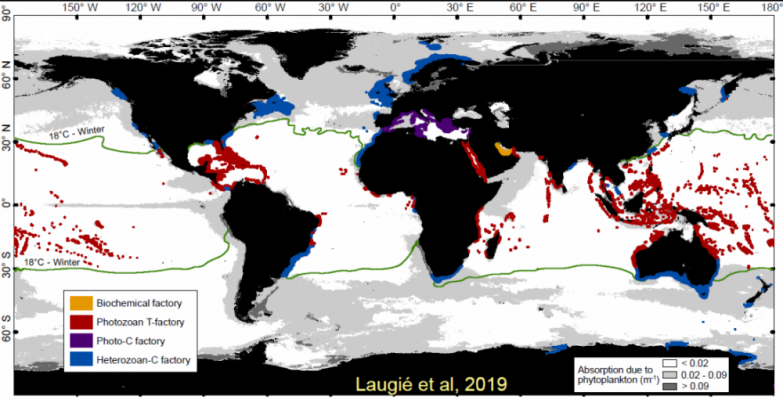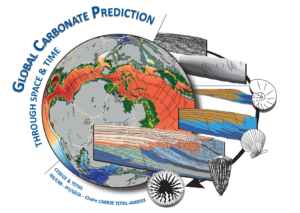The initial question was “how to predict global occurrence of marine carbonates during the Phanerozoïc with paleo-climate forward models” ? (cf. project GCP). (1) establish the carbonate factory function: the links between paleo-oceanic parameters (T°, Salinity, OM, … Water Depth, and paleo-ecosystems producing carbonate sédiments, (2) run paleo-climate and paleo-oceanic simulations (cf project GCP) and (3) map global distribution of carbonate factories by applying the carbonate factory function. Although this approach seems very sophisticated, it carries great uncertainties: important carbonate producing biota in the past are not living today and paleo-ecosystems are not well understood, spatial and global paleo-climate/oceanic computer models are still under development and are not 100 % accurate, critical spatial parameters for this approach, such as paleo-reliefs, plate-tectonics and paleo-water depth, are not well constrained, especially in the deep past as a result of weaker geological preservation with older ages and poor sampling. To summarize, model input are uncertain, simulation is uncertain and model output are not really calibrated….
Before embarking on such uncertain journey, we decided to check if this approach was working on modern marine carbonate systems: ocean physical parameters are measured and well known, climate is very well studied and monitored, land relief and water depths as well as carbonate factory occurrences especially the shallow marine ones (ie. coral reefs) can be easily mapped at global scale. So we can basically validate the carbonate factory function and check how marine carbonate occurrences can be predicted with measured oceanic physical parameters. All above cited uncertainties are minimized: so if we cannot predict modern carbonate occurrences with the carbonate factory function and the oceanographic parameters in the modern world, then forget this approach for the past! LA SUITE A PLUS TARD!!!!




